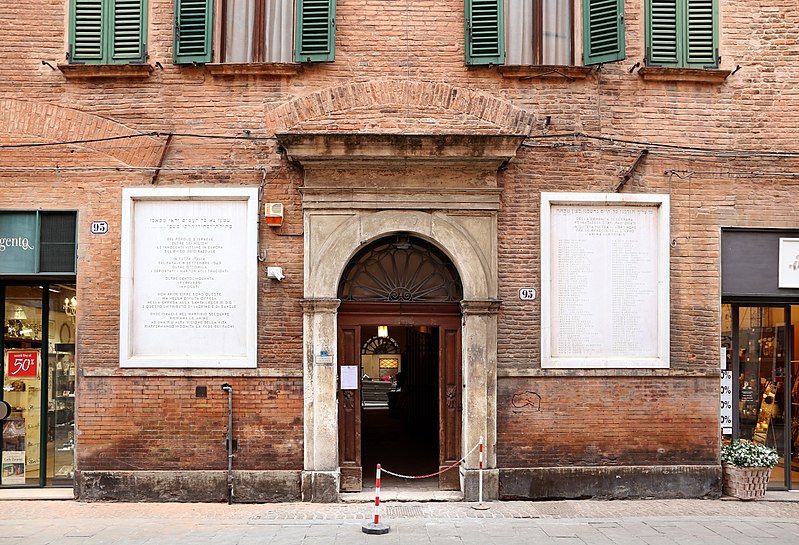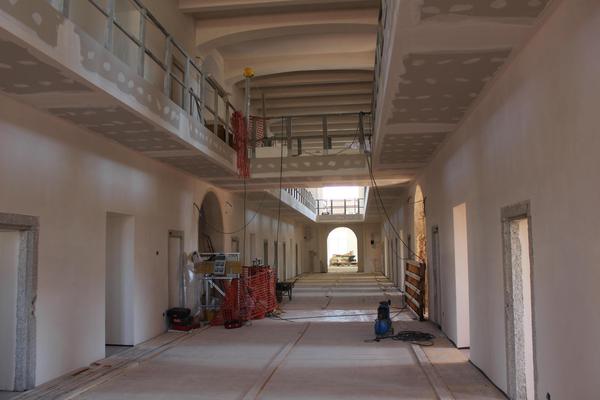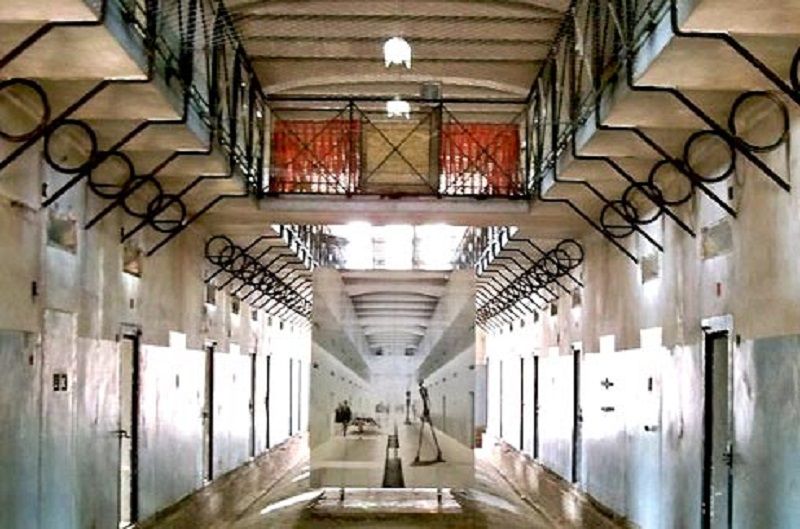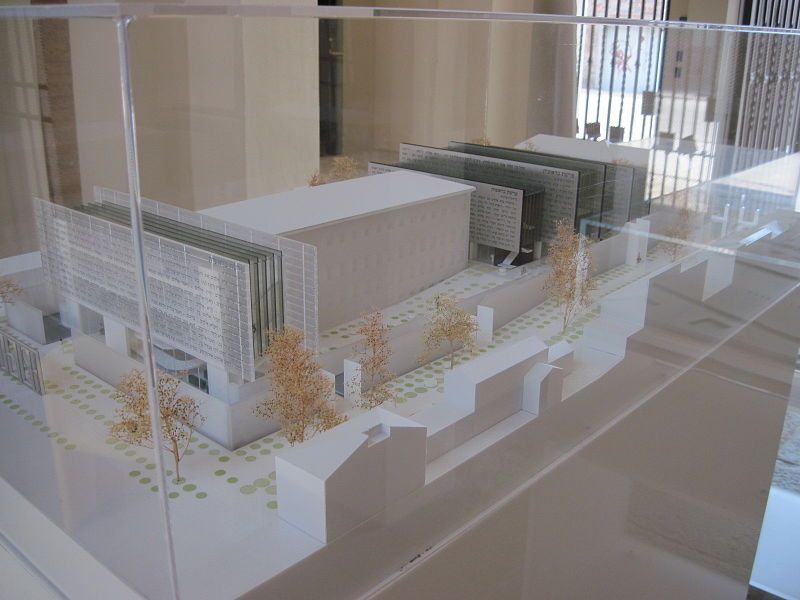The Museo Nazionale dell’Ebraismo Italiano e della Shoah – MEIS (National Museum of Italian Judaism and the Shoah) was founded with the mission to recount over two thousand years of Jewish history in Italy.
From South to North, for centuries Italian Jews have contributed to and participated in the country’s evolution, through phases of integration and exchange and other difficult times marked by persecution and isolation. What emerges is a common experience that affects everyone. At the MEIS, everyone can rediscover a piece of their history.
The MEIS tells the story and life of a minority, proposing itself as a place of meeting and exchange of experiences, a space that stimulates debate and dialogue between cultures, also through knowledge and testimony of racial persecution and the Shoah. A priority of MEIS is the relationship with local and national schools of all levels. The Museum presents a structured educational offer addressed to primary and secondary school students, universites and adults, through workshops, guided tours and moments of in-depth study.
The MEIS is located in Ferrara, a unique city that encompasses the various experiences of the millennial history of Italian Jews.
Present in Ferrara since the 12th century, the Jews have interwoven an intricate relationship with the city. Crucial was the policy of welcome extended by the House of Este and, in particular, dukes Ercole I and Ercole II and which culminated in the edicts inviting the Spanish and Portuguese Jews — driven from their homelands in 1492 — to settle in the city. After the city passed to the Papal States, the ghetto was established in 1627 and the local Jewish community declined only to resume its leading role in the social and economic fabric of Ferrara after 1859, when they gained equal rights. The racial laws and Nazi-fascist persecution obscured the serenity of daily life, but the local community was able to withstand the impact of time and hardship and is still active after more than a thousand years.

The Shoah in Italy
One of the main objectives of the MEIS is to bear witness to and document the Shoah in Italy through temporary and permanent exhibitions, educational workshops, screenings and meetings.
The Fascist persecutions kicked off by the racial laws passed in 1938 — through which the Jews were isolated and alienated from society — peaked in 1943 when thousands of Italian citizens were rounded up and deported to the extermination camps.
Kicked out of their schools and university positions, banished from the professions, Italian Jews were herded to the death trains and killed simply because they were Jews. Many of those who managed to save themselves joined the Resistance, playing a role in the country’s liberation; many continue to remember what happened each and every day, to give a face to those who were annihilated, speaking in schools to ensure that all this never happens again.
The Museum, the Building
The two most significant historic buildings of the original complex have been retained and these will be flanked by modern structures symbolizing the five books of the Torah, the Pentateuch. The MEIS serves as a bridge between past and present, a space intended for culture, the sharing of ideas and freedom.
The MEIS was founded with Italian Law 91 of 17 April 2003, amended by Law 296 of 27 December 2006, to “bear witness to the events that have characterized the two thousand years of Jewish presence in Italy”. A place in which to recount over two thousand years of Italian history and share the universal values of open welcome, diversity and dialogue. The designated city could only be Ferrara, a city in which one of the oldest and most flourishing Jewish communities in Europe had developed.

With the exhibition ‘Jews, an Italian story, the first thousand years’, the first part of the Meis, the National Museum of Italian Judaism and the Shoah, will be inaugurated on 13 December in Ferrara, with the conclusion of the restoration of the former city prison, three floors for 1,269 square meters which will also house the library and documentation centre. By 2020, the construction of five other new buildings (recalling the five books of the Torah) should also be completed according to the winning project of a competition and which will add another 2,733 square meters to the museum.

The former prison in Via Piangipane, decommissioned in 1992, was chosen as the future home of the MEIS. During the war, its walls imprisoned antifascist opponents and Jews, including the writer Giorgio Bassani, Matilde Bassani and Corrado Israel De Benedetti. The challenge was to transform a place of confinement into an open, inclusive space.
Studio Arco and Scape won the international competition for the architectural design of the MEIS. A total of 56 projects were submitted. While awaiting its inauguration, the MEIS organized temporary exhibitions in the small building — which had once housed the penal institution’s administrative offices — the first to be restored in close collaboration with the Ministry of Culture and Tourism and the Municipality of Ferrara. In 2017, during restoration and renovation of the building that housed the men’s section of the prison, visits to the site were organized and the Garden of Questions — a path dedicated to Jewish dietary laws — was created.

In addition to the restoration of Building C and intervention on the external walls — which have been maintained, but also rendered “permeable” through a series of openings along the entire perimeter — the project developed by Arco e Scape includes the construction of two modern blocks that dialogue with the restored building of the former prison: Buildings D and B.
Overlooking Via Rampari di San Paolo, Building D will house the ticket office, bookshop and public services and is destined to become the entrance to the Museum in its final configuration; Building B, on the other hand, will house the true and proper exhibition spaces.
Symbolizing the five books of the Torah, the two buildings feature walls of glass, concrete and aluminum bearing inscriptions in Hebrew. All the rooms feature soft, indirect zenithal light through brise soleil solar screens. At the heads of the exhibition blocks, through vertical openings, the city becomes a part of the interior space. The theme of the book, so crucial to Judaism, is reworked and becomes a physical space into which one can enter and immerse oneself.
History of the Prison
The district prison complex on Via Piangipane is composed of three distinct building blocks: the entrance building, resulting from the union of two original smaller buildings used as a guardhouse and a custodian’s dwelling; a building used for detention and offices; and a central body also used for detention. The whole is enclosed by a double wall.
The Piangipane Street Judicial Prison was built between 1908 and 1912 on a project drawn up by engineers Bertotti and Facchini of the Civil Engineering Office. It began operation on September 14, 1912, with 104 inmates.
During the 20-year fascist period it became a place of detention for many Ferrara antifascists. After the fall of the regime on July 30, 1943, 88 political prisoners were freed.
In the aftermath of September 8, 1943, with the German occupation and the birth of the Italian Social Republic, the prison again fills with antifascists, who are joined by resistance fighters and Jews. On October 7, 1943, 34 people are arrested and imprisoned here, including Rabbi Leone Leoni (1897-1964) and Eugenio Ravenna, grandson of former Podestà Renzo.
Related activities
Prisons turned into memorials: the cases of Ferrara and Barcelona. Holocaust Remembrance Day 2022

